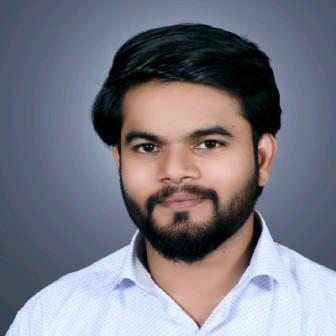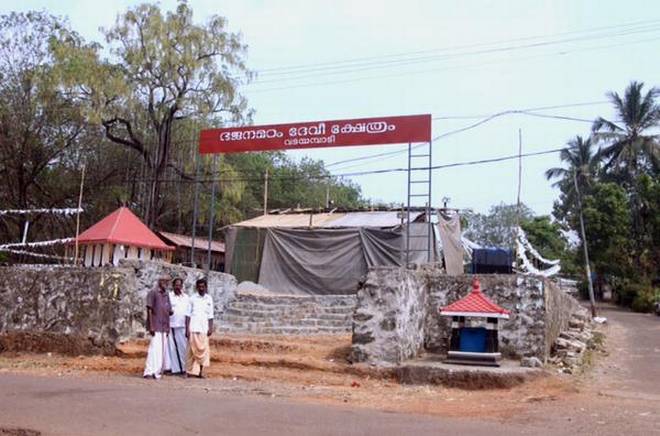Jay Choudhari
Introduction
The Indian caste system is a deeply entrenched and centuries-old social structure, spanning over 3,000 years, if not more. This system has played a pivotal role in perpetuating discrimination and social hierarchies in India. Among the marginalized groups within this system, the ‘Dalits’, also known as ‘Untouchables’, have faced the most profound oppression. India’s struggle for independence from British colonial rule culminated in the adoption of its constitution in 1950, which aimed to abolish caste-based discrimination and provide reserved quotas for marginalized communities. However, even after 75 years of independence, their representation in various sectors of society presents a stark contrast to their demographic presence.
In this essay, we will delve into the enduring issue of Dalit exclusion in India and explore their current representation in Indian society, along with concepts such as social exclusion, adverse incorporation, unfair credit scoring, opportunities and outcomes, income inequality, and the important role of transparency and accountability.
In India, Dalits face severe and dehumanizing mistreatment, often worse than the treatment of animals. Historically, they were subjected to egregious forms of discrimination, such as being prohibited from drinking public water, walking in public places, and entering Hindu temples. Dalits used to wear bells in their legs to let the upper-castes know that a Dalit was passing by; shockingly, some of these practices persist today. For instance, as reported by India Today, a tragic incident occurred in 2022, where a nine-year-old Dalit student lost his life due to a brutal assault by his upper-caste schoolteacher. His offense: drinking water reserved for upper-caste students [source: India Today, August 13, 2022]. In a strikingly similar incident in Mysore, India, a group of individuals belonging to the upper-caste community drained a public water tank after a Dalit girl dared to drink water from it, as reported by The New Indian Express in September 2022. These types of tragic incidents serve as a stark illustration of the ongoing social exclusion faced by Dalits in India, and they are just some examples of the institutional violence perpetrated against them.
Education, as the cornerstone of social transformation, plays a pivotal role in shaping the future. It is imperative that we focus on enhancing educational opportunities for Dalits. Scholarships, mentorship programs, and affirmative action within educational institutions are powerful tools that can facilitate greater Dalit enrollment. Furthermore, promoting education among adults through literacy programs empowers older generations to actively participate in economic activities and community development initiatives. However, unfortunately, the present situation in India sharply deviates from this envisioned ideal. As an illustration of this disparity, in September 2023, we were confronted with the tragic suicides of two Dalit students within the prestigious Indian Institutes of Technology (IIT). It is disheartening to note that some upper-caste students continue to perpetuate discriminatory practices, following a path laid by their ancestors because of ‘Quota/Reservation’ designated for individuals from lower castes and Dalit communities. This tragic incident serves as a somber reminder of the persistent hurdles encountered by Dalit students in institutions of higher education, and this practice could also be called ‘indirect discrimination’.
Furthermore, a distressing event in 2016 at Hyderabad University further underscores the systemic issues. A Dalit student, Rohith Vemula, faced suspension by a committee of professors for simply raising concerns under the banner of the Ambedkar Students Association (ASA). Tragically, upon learning of this distressing news, Rohith took his own life, sending shockwaves through the nation and beyond. This incident not only revealed an individual tragedy but also raised profound concerns about majoritarianism within Indian universities. These heartbreaking incidents highlight the pressing need to address the deeply rooted problem of institutional discrimination against Dalits in India. They serve as stark reminders that, despite progress in various aspects of society, significant challenges persist, particularly within the realm of education. It is imperative that we collectively work toward fostering a more inclusive and equitable educational system and a society where every individual, regardless of their background, can access opportunities and realize their full potential.
Let’s examine the data on representation. In 2018, an official survey was conducted within the Indian Institutes of Technology (IIT), and the findings are deeply concerning. This data was officially submitted to the Parliament of India by the Human Resource Department of the Government of India. Since the 1950s, India has allocated reservations to promote equality, with Dalits receiving 15%, indigenous groups around 8%, and Other Backward Classes (OBC) granted 27% reservations. However, when we look at the faculty composition within IITs, a stark inequality becomes apparent. Out of the 9,640 faculty positions, only 149 belong to the Dalit community, with fewer than 25 professors from Indigenous backgrounds and just 329 from OBC communities [Source: Human Resource Development, Government of India, 2018]. Though India’s international fame showcases that it is a diversified country, in reality it is not. This stark underrepresentation in prestigious educational institutions raises serious questions about equality and access in India’s educational system.
Adding to this concerning scenario, the combined faculty of all the Indian Institutes of Management (IIMs) represents just 6% of the total from Dalit, indigenous, and OBC backgrounds, while the national population of these groups is nearly 80% [source: The Print]. This glaring disparity persists despite over seven decades of reservation policies and equal opportunity initiatives. It suggests that the opportunities provided have not resulted in the desired outcomes. These injustices and systemic discrimination against Dalits are reflective of their adverse incorporation into prominent Indian educational institutions. Unfortunately, similar, if not worse, underrepresentation patterns persist in the media, politics, the corporate sector, and nearly every other facet of society.
These issues were challenged by Dr. B.R. Ambedkar, who was a Dalit and a remarkable figure in India’s history. In 1950, he was sought for a position in the first cabinet of the Indian government, and his qualifications were unrivaled. He was the first Dalit to receive higher education abroad and later became the Law Minister and chief architect of the Indian constitution. Dr. Ambedkar was not only a profound leader of the oppressed classes but also a great economist. His second doctoral thesis, ‘The Problem of the Rupee’, completed at the London School of Economics, played a significant role in the establishment of the Reserve Bank of India. He had a multifaceted personality, being a socialist, a humanitarian, and a lawyer. His contributions to India’s history were immense, and in a testament to his intellectual prowess, Columbia University honored him in 2013 by declaring Dr. B.R. Ambedkar the world’s greatest scholar. Additionally, recognizing his significant contributions, the London School of Economics (LSE), where he was an esteemed alumnus, erected a statue in his honor, serving as a proud reminder of his enduring legacy. In 1956, Dr. Ambedkar embraced Buddhism and left the discriminatory Hindu religion, inspiring nine million Dalit followers to do the same. The constitution he authored promised equal opportunities for all.
However, despite this, due to a lack of transparency and the prevalence of poverty in India, these rights are frequently violated. Even after 75 years of implementing these policies, disparities continue to persist in the country. There are several significant reasons behind the persistence of this exploitation and the lack of substantial progress despite the introduction of policies over seven decades ago. One of the most critical factors, as highlighted in Hason Hickel’s study ‘The Divide: A Brief Guide to Global Inequality and Its Solutions’, is the issue of corruption within Indian governments and public administration. Hickel asserts that the level of corruption among public administrators in India is unparalleled and not found to such an extent anywhere else in the world. This endemic corruption has far-reaching consequences, ultimately contributing to the perpetuation of poverty and social inequality.
India is indeed one of the world’s fastest-growing economies. However, despite this remarkable economic growth, the country grapples with staggering economic inequalities. These disparities are primarily attributed to two crucial factors: an inequitable credit system and the prevailing social hierarchies within Indian society, which are defined by divisions based on caste and religion. According to reports from Oxfam, a striking statistic underscores the extent of this inequality: “40% of the total wealth is generated by the top 1% of the population, while the bottom 50% of the population contributes just 1% to the overall wealth.” [Racial Capitalism – Jodi Melamed] Furthermore, data from the Indian Human Development Survey 2011–12 reveals that Dalits, who are socially marginalized, are also among the poorest of the poor and not only historically poor, and this poverty has been raised by the intergenerational poverty among Indian untouchables. Also, this is largely because the rich benefit from government policies while the impoverished are excluded from accessing credit, thus perpetuating a cycle of poverty, which is also known as ‘transmission of poverty from one generation to other [Chronic Poverty]’.
Economic empowerment forms the bedrock of any effort to uplift marginalized communities. For Dalits, targeted economic initiatives are essential. Microfinance programs tailored to their specific needs can facilitate entrepreneurship and small business development. Providing access to markets and ensuring fair prices for their products can break the cycle of poverty, fostering self-reliance and financial stability. Furthermore, skill development programs in sectors with high market demand can open doors to better employment opportunities, leading to improved economic prospects for Dalit families.
Gender inequality within Dalit communities is also an important aspect to consider. In ‘Jeena Amucha’, which translates to ‘The Prisons We Broke’ in English, Babytai Kamble delves into the profound repercussions of the social hierarchy on the Dalit community. Within her narrative, Kamble not only emphasizes the social exclusion of Dalits but also draws poignant attention to the unique challenges faced by Dalit women, who find themselves doubly marginalized, facing discrimination not only from upper-caste communities but also within their own Dalit community. Gender discrimination compounds the challenges faced by Dalit women. Addressing the intersectionality of caste and gender is crucial for comprehensive social inclusion. With the passing of Dr. Ambedkar, a fearless advocate for the rights of Dalits, a significant void was left, and the resolute voice for their rights fell silent, and that was the end.
Conclusion
The Dalits face numerous kinds of discrimination, and the official data clearly shows how their population is represented in education, which, according to this essay, is a catalyst for change. The social exclusion faced by Dalits in India from 1950 to 2023 underscores the urgent need for a paradigm shift. It demands not just policy changes but a societal transformation rooted in empathy, equality, and justice. India’s strength lies in its diversity, and embracing this diversity through inclusive policies and social initiatives can pave the way for a brighter future. By promoting education, economic empowerment, gender equality, social integration, and supporting grassroots movements, India can break the chains of social exclusion. The time has come for every Indian citizen, regardless of caste or background, to have equal access to opportunities and live a life of dignity. As the nation moves forward, it must carry the torch of inclusivity, ensuring that no one is left behind. Through collective efforts and unwavering commitment, India can truly become a beacon of social justice, setting an example for the world to follow.
References
- Chronic Poverty: Concepts, Causes and Policy, A. Shepherd & J. Brunt (eds)
- Global inequality: a new approach for the age of globalization/Branko Milanovic.
- The Divide: a brief guide to global inequality and its solutions/Jason Hickel.
- Waiting for a Visa, An Autobiography by Dr. Ambedkar, Dr. Babasaheb Ambedkar: Writings and Speeches, Vol. 12, edited by Vasant Moon (Bombay: Education Department, Government of Maharashtra, 1993), Part I, pp. 661-691
- Kamble, Baby, 2008. ‘Jeena Amuche’ translated by Maya Pandit as The Prisons We Broke. New Delhi: Orient Blackswan.
- The Constitution of India, Article 15(4), (5), and (6) that allow reservation in government educational institutions for SCs, STs, and OBCs.
- Article 16(4), (4A), and (6) that allow reservation in government jobs and promotion for SCs, STs, and OBCs.
~~~
Jay Choudhari is pursuing his masters in Data, Inequality and Society from the University of Edinburgh. He also runs an educational foundation called Dhyeya Educational Foundation, Panchasheel Academy in Chandrapur, Maharashtra that focuses on access of education to deprived community students from Chandrapur and Gadchiroli districts of Maharashtra.










